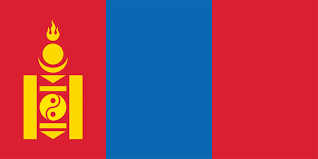Mongolia’s Climate Journey
On April 22, Earth Day, with other 129 countries Mongolia is expected to sign the Paris Climate Change Agreement, which was adopted at COP 21 at Paris last December, in New York. While Mongolia, being the largest landlocked country with development constraints, emits a minuscule of greenhouse gases (GHG), 25 per cent of Mongolians are facing severe climate impacts. Among nearly 2.8 million total populations, more than 225,000 or 41% of the total herder population have been suffering from hostile weather conditions, including more than 28,000 children below the age of five. Will be the signing of the Paris Climate Change Agreement accelerate the world community especially the Mongolian government to deliver climate justice to the herders' community among others?
Unexpected lingering heavy snow and cold weather this winter have already killed 669,000 animals by the end of March. Meanwhile, the snow cover has increased to 90 per cent of the total territory as nearly 113 districts (soums) of total 339 districts experienced dzud (onset of severe winter weather) or near-dzud conditions. According to the UN, the number of dead animals could reach 1.2 million during the onset of spring triggering massive social and economic burden for herder communities whose only livelihood depends on livestock. Similarly, the drought of 2015 wiped out up to 80 per cent of its wheat crop and fodder for livestock. In the winter of 2009-2010, Mongolia lost 20 per cent (about 8.5 million) of its livestock to the dzud. Despite the late 1990s, dzud had accelerated many efforts to improve pasture and livestock management, the 2009‐2010 dzud severely affected 769,000 people or 28% of Mongolia. Nearly 220,000 herding households were affected of which 44,000 households lost all of their livestock and 164,000 lost more than half their herd.
Strained with opportunities in both geographical and administrative, Mongolia has been devastated by disasters and extreme weather conditions. Mongolia is one of the most vulnerable countries to the impacts of climate change due to its geographical location and climate conditions as well as the structure and development level of economic sectors and lifestyle of the people. Nearly, 21,000 of its population on average was affected by weather-related disasters between 1995 and 2015. Of late, climate change has exacerbated the frequency of hazards throughout the country by affecting both country’s economy and traditional social structure.
How the government has been responding to these climate change-induced anomalies? Mongolia’s climate journey began, albeit internationally, in the early 1990s when the country transitioned into and adopted a set of democratic governance edifices. It is apt to assume that global environmental governance (1992 Earth Summit) and addressing developmental challenges in Mongolia had a similar genesis. Mongolia was one of the first countries to support the outcomes of the Earth Summit including adapting to Agenda 21 and the Framework Convention on Climate Change (UNFCCC). Mongolia has been adhering to the core principles of common but differentiated responsibility and precautionary action under UNFCCC.
While the government institutionalized National Council for Sustainable Development (NCSD) in 1996 to implement Mongolia’s Agenda 21 (MAP 21), the country took its active intervention on demanding efficient energy technology from developed countries in the first Conference of Parties (COP-1) to UNFCCC at Berlin in 1995. Mongolian delegations also successfully asked for references of IPCC reports into non-English languages during the inter-sessional Bon Conference in 1997. With European Union and Malaysia, Mongolia recommended that developed countries should separately prepare and submit reports on global climate observation systems in 1999 COP. From suggesting a ‘long-term sub-regional cooperation action plan’ in Poznan to identifying modalities of national communications in Bonn, Mongolia has been fairly active during COPs and other inter-sessional negotiations under UNFCCC. At the early climate negotiation phase, Mongolia had been partnering with the EU focused on ‘technology transfer and mitigation’.
While the country needs a more focused approach to adaptation, Mongolia’s voice on adaptation during climate negotiations was least heard so far. The official statements during high-level summits from leaders of the government have not materialized to full potential. Similar events like Hyogo Framework Action (HFA) adopted for 2005-2015 on disaster resilience and thereafter Sendai Declaration in 2015 for the coming decade, have yet to build herder communities’ resilient capacity so far. Looking closely at the national reports submitted at HFA, the country has not progressed to prepare for disasters like this year dzud. Only insufficient financial resources couldn’t be the criteria of inaction.
Can Mongolia be looking for building coalition with Kyrgyzstan, Tajikistan, Bhutan and Nepal, for more world attention to landlocked countries with a large number of pastoral communities? Mongolia must look beyond technology transfer and emission reduction to protect, empower and build the capacity of its herder communities. The Paris Climate Agreement is a beginning for Mongolia to address the climate justice of its large vulnerable citizens. The government must create avenues for comprehensive monitoring of the implementation of its Intended Nationally Determined Contribution (INDC) with stakeholders, especially CSOs. Among others, Mongolia should take lead on the discussion on ‘Loss and Damage’ under Paris Agreement in future climate negotiations. As the general election is on the corner, the Great Khural (National Assembly) must debate, discuss and deliver on Paris Agreement.
[Originally Published in The UB Post (Mongolia), April 22, 2016]
